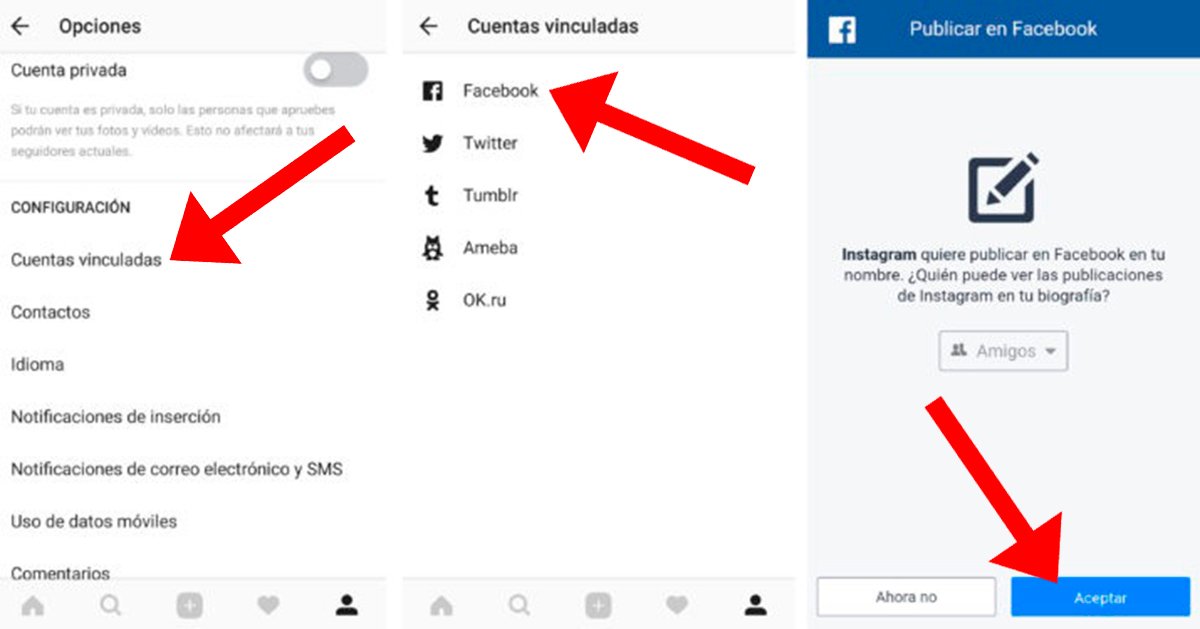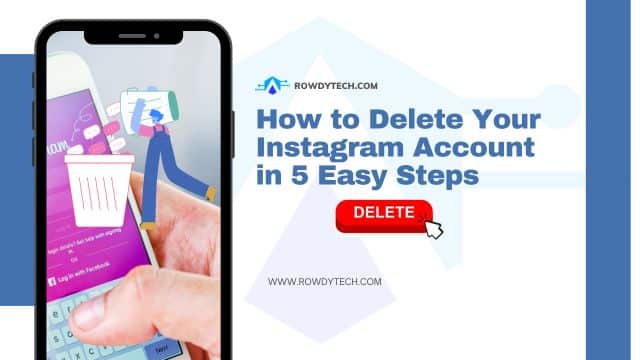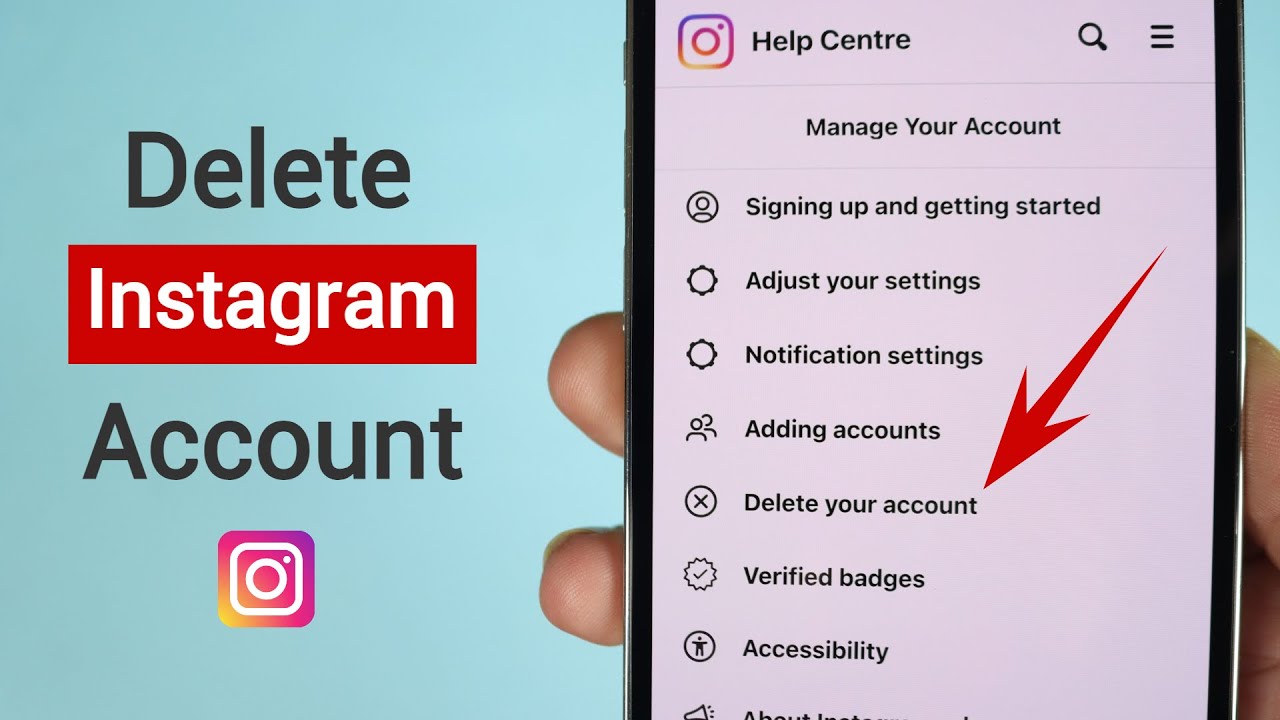Why You Might Want to Remove Instagram from Facebook
As social media platforms continue to evolve, users are becoming increasingly aware of the importance of maintaining separate online identities. One way to achieve this is by disconnecting Instagram from Facebook, a process that can help reduce cross-platform noise and address privacy concerns. But why would someone want to remove Instagram from Facebook in the first place?
For starters, having separate accounts can help users maintain a level of professionalism on Facebook, while keeping their Instagram account more personal. This is especially important for individuals who use Facebook for work or business purposes, as they may not want their personal Instagram posts to be visible to their professional network.
Another reason to remove Instagram from Facebook is to reduce the amount of data sharing between the two platforms. When Instagram and Facebook are connected, data such as likes, comments, and shares can be shared between the two platforms. By disconnecting them, users can help keep their data separate and reduce the risk of it being used for targeted advertising.
In addition, removing Instagram from Facebook can also help users avoid the potential consequences of having a single account hacked or compromised. If a user’s Facebook account is hacked, for example, the hacker may also gain access to their connected Instagram account. By keeping the accounts separate, users can reduce the risk of this happening.
Finally, some users may simply prefer to keep their Instagram and Facebook accounts separate for personal reasons. Perhaps they want to maintain a separate identity on each platform, or maybe they just prefer the simplicity of having separate accounts. Whatever the reason, removing Instagram from Facebook can be a simple and effective way to achieve this.
So, if you’re looking to remove Instagram from Facebook, you’re not alone. Many users are taking steps to maintain separate online identities, and disconnecting Instagram from Facebook is a great place to start. In the next section, we’ll take a closer look at how Instagram and Facebook are connected, and what this means for users.
Understanding the Connection Between Instagram and Facebook
Before we dive into the process of removing Instagram from Facebook, it’s essential to understand the connection between the two platforms. In 2012, Facebook acquired Instagram, and since then, the two platforms have been closely linked. This connection allows users to share content between the two platforms, use Facebook login credentials to access Instagram, and even share data between the two accounts.
When you connect your Instagram account to Facebook, you’re allowing the two platforms to share data, such as your profile information, likes, comments, and shares. This data sharing can be useful for users who want to share their Instagram content on Facebook, but it also raises concerns about data privacy and security.
Additionally, when you connect your Instagram account to Facebook, you’re also allowing Facebook to access your Instagram data, including your followers, likes, and comments. This data can be used by Facebook to target ads and improve its services, but it also means that your Instagram data is being shared with a third-party platform.
It’s worth noting that even if you remove Instagram from Facebook, you may still be able to access some features that rely on the connection between the two platforms. For example, you may still be able to share your Instagram content on Facebook, but you won’t be able to use Facebook login credentials to access Instagram.
Now that we understand the connection between Instagram and Facebook, let’s move on to the process of removing Instagram from Facebook. In the next section, we’ll provide a step-by-step guide on how to disconnect your Instagram account from Facebook.
It’s also important to note that removing Instagram from Facebook is a relatively straightforward process, but it’s essential to understand the implications of doing so. If you’re looking for a way to maintain separate online identities or reduce data sharing between the two platforms, removing Instagram from Facebook may be the right solution for you.
Before you start the process, make sure you understand what will happen when you remove Instagram from Facebook. We’ll cover this in more detail in the next section, but it’s essential to know that removing Instagram from Facebook will not delete your Instagram account or affect your ability to use the platform.
How to Remove Instagram from Facebook: A Step-by-Step Process
Removing Instagram from Facebook is a relatively straightforward process that can be completed in a few steps. Here’s a step-by-step guide on how to do it:
Step 1: Log in to your Facebook account and navigate to the Settings page. You can do this by clicking on the downward arrow in the top right corner of the page and selecting “Settings” from the dropdown menu.
Step 2: Click on the “Apps and Websites” tab on the left side of the page. This will take you to a page that lists all the apps and websites that are connected to your Facebook account.
Step 3: Find the Instagram app in the list and click on the “Remove” button next to it. This will remove the connection between your Instagram and Facebook accounts.
Step 4: Confirm that you want to remove the connection by clicking on the “Remove” button in the pop-up window that appears.
Step 5: Log in to your Instagram account and navigate to the Settings page. You can do this by clicking on the three horizontal lines in the top right corner of the page and selecting “Settings” from the dropdown menu.
Step 6: Scroll down to the “Account” section and click on the “Linked Accounts” option. This will take you to a page that lists all the accounts that are connected to your Instagram account.
Step 7: Find the Facebook account in the list and click on the “Unlink” button next to it. This will remove the connection between your Instagram and Facebook accounts.
That’s it Once you’ve completed these steps, your Instagram account will be removed from your Facebook account, and you’ll no longer be able to share content between the two platforms.
It’s worth noting that removing Instagram from Facebook will not delete your Instagram account or affect your ability to use the platform. You’ll still be able to use Instagram as usual, but you won’t be able to share content between the two platforms.
If you’re looking for a way to maintain separate online identities or reduce data sharing between the two platforms, removing Instagram from Facebook may be the right solution for you. In the next section, we’ll discuss what happens when you remove Instagram from Facebook, including how it affects account linking, data sharing, and any potential impact on Instagram features or functionality.
What Happens When You Remove Instagram from Facebook
When you remove Instagram from Facebook, you’re essentially breaking the connection between the two platforms. This means that you’ll no longer be able to share content between the two platforms, and your Instagram account will no longer be linked to your Facebook account.
One of the main consequences of removing Instagram from Facebook is that you’ll no longer be able to use Facebook login credentials to access Instagram. This means that you’ll need to create a new login credentials for Instagram, or use an existing one if you’ve already created one.
Another consequence of removing Instagram from Facebook is that you’ll no longer be able to share Instagram content on Facebook. This means that if you want to share your Instagram posts on Facebook, you’ll need to do so manually by copying and pasting the link or image into a Facebook post.
Removing Instagram from Facebook also affects data sharing between the two platforms. When you connect your Instagram account to Facebook, you’re allowing Facebook to access your Instagram data, including your followers, likes, and comments. By removing Instagram from Facebook, you’re essentially cutting off this data sharing, which can help to improve your online privacy and security.
It’s worth noting that removing Instagram from Facebook will not affect your ability to use Instagram’s features and functionality. You’ll still be able to post photos and videos, engage with your followers, and use Instagram’s various features and tools.
However, removing Instagram from Facebook may affect some third-party apps and services that rely on the connection between the two platforms. For example, some apps may use Facebook login credentials to access Instagram data, and removing Instagram from Facebook may break this functionality.
Overall, removing Instagram from Facebook is a relatively straightforward process that can help to improve your online privacy and security. By breaking the connection between the two platforms, you can reduce data sharing and improve your control over your online identity.
In the next section, we’ll discuss some common issues that may arise when trying to disconnect Instagram from Facebook, and provide some troubleshooting tips to help you resolve these issues.
Troubleshooting Common Issues with Disconnecting Instagram from Facebook
While disconnecting Instagram from Facebook is a relatively straightforward process, some users may encounter issues along the way. Here are some common problems that may arise and their solutions:
Issue 1: Account linking error
Solution: If you encounter an account linking error while trying to disconnect Instagram from Facebook, try restarting the process from the beginning. Make sure you are using the correct login credentials for both Instagram and Facebook, and that you have not exceeded the maximum number of attempts to link or unlink your accounts.
Issue 2: Data sharing issues
Solution: If you are experiencing issues with data sharing between Instagram and Facebook after disconnecting your accounts, try checking your account settings on both platforms. Ensure that you have not accidentally enabled data sharing or account linking on either platform.
Issue 3: Instagram features not working
Solution: If you notice that certain Instagram features are not working after disconnecting your account from Facebook, try restarting the Instagram app or clearing your browser cache. This should resolve any issues related to feature functionality.
Issue 4: Facebook login credentials not working
Solution: If you are unable to log in to Instagram using your Facebook login credentials after disconnecting your accounts, try resetting your Facebook password or using an alternative login method, such as your email address or phone number.
Issue 5: Account unlinking not successful
Solution: If you are unable to unlink your Instagram account from Facebook, try checking your account settings on both platforms to ensure that you have not accidentally enabled account linking. You can also try contacting Instagram or Facebook support for assistance.
By following these troubleshooting tips, you should be able to resolve any common issues that may arise when disconnecting Instagram from Facebook. Remember to always use caution when managing your social media accounts, and to review your account settings regularly to ensure that your online identity remains secure.
In the next section, we’ll discuss alternative methods for managing your Instagram and Facebook accounts, including using third-party apps or browser extensions to streamline account management.
Alternative Ways to Manage Your Instagram and Facebook Accounts
While disconnecting Instagram from Facebook can be a straightforward process, some users may prefer to manage their accounts in a more streamlined way. Fortunately, there are several alternative methods for managing Instagram and Facebook accounts, including using third-party apps or browser extensions.
One popular option is to use a social media management tool like Hootsuite or Buffer. These tools allow users to manage multiple social media accounts from a single dashboard, including Instagram and Facebook. This can be especially useful for businesses or individuals who need to manage multiple accounts across different platforms.
Another option is to use a browser extension like Social Blade or Instagram Manager. These extensions provide users with a range of tools and features for managing their Instagram and Facebook accounts, including account analytics, content scheduling, and engagement tracking.
Some users may also prefer to use a third-party app like Instagram’s own “Instagram Insights” app or Facebook’s “Facebook Page Manager” app. These apps provide users with a range of tools and features for managing their accounts, including account analytics, content scheduling, and engagement tracking.
Regardless of which method you choose, it’s essential to ensure that you are using a reputable and trustworthy tool or app. This will help to protect your account security and prevent any potential issues with data sharing or account linking.
By using one of these alternative methods, you can streamline your account management and make it easier to manage your Instagram and Facebook accounts. This can be especially useful for businesses or individuals who need to manage multiple accounts across different platforms.
In the next section, we’ll discuss some best practices for maintaining separate online identities across multiple social media platforms, including advice on password management and account security.
Best Practices for Maintaining Separate Online Identities
Maintaining separate online identities across multiple social media platforms is crucial for individuals and businesses alike. Here are some best practices to help you maintain separate online identities:
1. Use unique passwords for each account: Using the same password for multiple accounts can compromise your online security. Use a password manager to generate and store unique, complex passwords for each account.
2. Use two-factor authentication: Two-factor authentication adds an extra layer of security to your accounts by requiring a second form of verification, such as a code sent to your phone or a biometric scan.
3. Keep your accounts up to date: Regularly review and update your account information, including your profile picture, bio, and contact information.
4. Use separate email addresses: Use separate email addresses for each account to prevent cross-platform noise and maintain separate online identities.
5. Be mindful of data sharing: Be aware of the data sharing policies of each platform and adjust your settings accordingly. Consider using a data sharing opt-out tool to limit the amount of data shared between platforms.
6. Monitor your accounts regularly: Regularly monitor your accounts for suspicious activity and adjust your settings as needed.
7. Use a social media management tool: Consider using a social media management tool to streamline your account management and maintain separate online identities.
By following these best practices, you can maintain separate online identities across multiple social media platforms and protect your online security.
In the next section, we’ll summarize the importance of taking control of your social media accounts and provide a final call-to-action for readers to review and adjust their account settings as needed.
Conclusion: Taking Control of Your Social Media Accounts
Taking control of your social media accounts is crucial in today’s digital age. By disconnecting Instagram from Facebook, you can maintain separate online identities, reduce cross-platform noise, and address privacy concerns.
Throughout this article, we have provided a step-by-step guide on how to remove Instagram from Facebook, discussed the consequences of doing so, and offered solutions to common problems that may arise. We have also discussed alternative methods for managing Instagram and Facebook accounts, and provided tips and best practices for maintaining separate online identities.
By following the steps outlined in this article, you can take control of your social media accounts and ensure that your online presence is secure and separate. Remember to regularly review and adjust your account settings as needed to maintain your online security and identity.
Don’t wait any longer to take control of your social media accounts. Follow the steps outlined in this article and start maintaining separate online identities today. Your online security and identity depend on it.
By taking control of your social media accounts, you can ensure that your online presence is secure, separate, and tailored to your specific needs. Don’t let your social media accounts control you – take control of them today.





